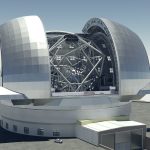In a paradigm-shifting development in cosmology, creative research has lately used artificial intelligence (AI) to lift the enigma around dark energy. For a long time, scientists have been baffled by this enigmatic phenomenon, which is thought to be the cause of the universe’s accelerating expansion. AI’s entry into this cosmic riddle not only highlights the tool’s ability to solve astrophysical problems but also marks a significant advancement in the process of deciphering cosmic orchestration.
Cracking the Mystery of Dark Energy
One of the biggest mysteries of the universe is dark energy, which makes up around 68% of the cosmic fabric. This force seems to resist, causing the universe to expand at an ever-increasing rate, and is different from the gravitational attraction of dark matter. Due to its elusiveness and inability to be seen directly, dark energy is a great prospect for novel exploratory techniques and theoretical study.
AI: Bringing Light to Universe Mysteries
The main research advances artificial intelligence by using its complex algorithms to analyze astronomical data with previously unheard-of precision. With the use of AI, many observations from telescopes and cosmic observatories may be carefully examined, revealing patterns and abnormalities that would be missed by more conventional methods. With the use of this approach, researchers may now more clearly solve the dark energy riddle by bringing theoretical models of dark energy into line with the observed facts.
Unveiling With AI: Approach and Perspectives
The research examines the cosmic microwave background (CMB), the primordial afterglow of the cosmos, and the immense fabric of galaxies and cosmic structures using machine learning. By comparing these cosmic occurrences with dark energy models, AI-driven research finds subtle discrepancies that imply the power of dark energy may not be as consistent as previously believed. The discovery suggests that dark energy is dynamic and changes across time and space, which goes against accepted cosmological theories.
Cosmic Repercussions: Reevaluating the Universe
The results of this study have far-reaching consequences that may require a reassessment of the current cosmological model, which has long regarded dark energy as a uniform force known as the cosmological constant. Moreover, this investigation offers possible avenues for overcoming the infamous gap between general relativity and quantum physics, offering a new understanding of the basic forces of the world.
The Path Ahead: Handling Complications
Even with the study’s remarkable findings, there are still many obstacles to overcome before dark energy can be completely understood. Richer astronomical datasets and even more advanced AI approaches will be needed for future research. Future projects like the LSST at Vera C. Rubin Observatory and the Euclid space telescope are expected to provide scientists with the data required for these cutting-edge discoveries. This work emphasizes the value of interdisciplinary cooperation by bringing together the fields of theoretical physics, computer science, and astrophysics to tackle the most difficult problems in the universe.
Final Words of Wisdom
AI’s use in the study of dark energy is a prime example of how technology may revolutionize science and reveal the mysteries of the cosmos. Through presenting novel insights into dark energy, this work advances our understanding of the cosmos and honors the coexistence of cutting-edge technology and basic science. AI’s potential to reveal the secret stories of the cosmos might usher in a new age of cosmic inquiry and bring us one step closer to comprehending the vast and mysterious world we live in. This potential will only grow as AI’s capabilities advance.








